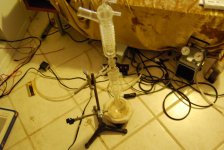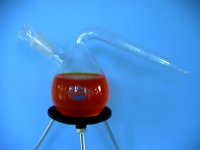I guess I'll just have to find the best option that fits into my budget and adjust the amount I can boil according to that, but I have a much clearer picture now.
Compared to the US labware in the UK is about 2x more expensive, so the options are very limited. I was even better of ordering the soxhlet from over there and pay the costly shipping prices.
Compared to the US labware in the UK is about 2x more expensive, so the options are very limited. I was even better of ordering the soxhlet from over there and pay the costly shipping prices.



